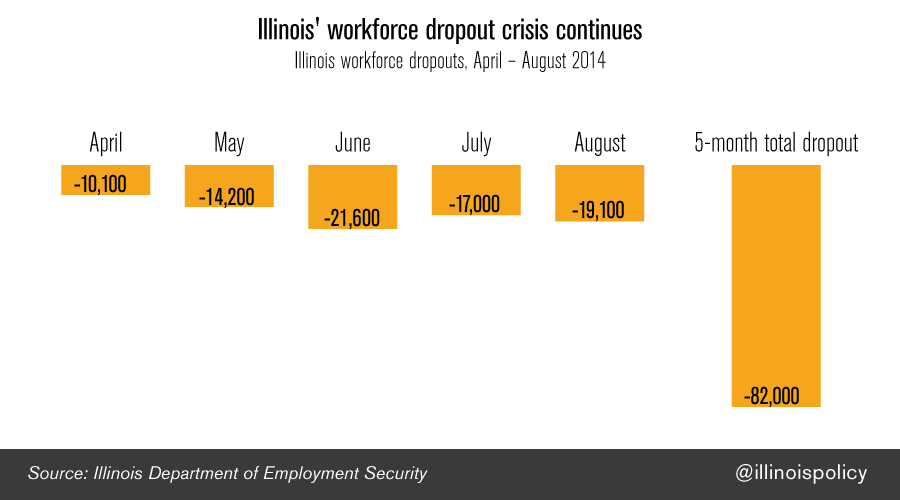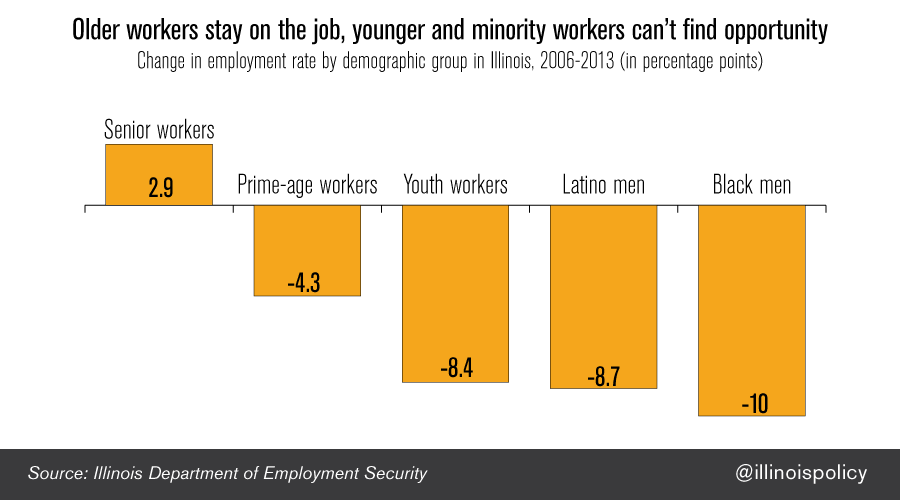Illinois’ workforce hits new low in August, and it’s not because of retirements
Illinois continues to bleed workers, with another 19,000 Illinoisans dropping out of the workforce in the month of August alone, according to a press release from the Illinois Department of Employment Security, or IDES. As a result, Illinois’ labor force participation rate hit a new 35-year low in August. The state’s jobless rate fell from...
Illinois continues to bleed workers, with another 19,000 Illinoisans dropping out of the workforce in the month of August alone, according to a press release from the Illinois Department of Employment Security, or IDES.
As a result, Illinois’ labor force participation rate hit a new 35-year low in August.
The state’s jobless rate fell from 6.8 percent to 6.7 percent, once again driven entirely by workforce dropouts. In fact, the number of people working in Illinois actually decreased month-over-month by 7,000. Of the workforce dropouts, 7,000 were previously employed while 12,000 were previously unemployed.
This news comes after four consecutive months of workforce hemorrhaging in Illinois. Since April, 82,000 Illinoisans have dropped out of the workforce. In the same time frame, the state’s jobless rate has dropped from 8.4 percent to 6.7 percent. That drop is clearly not an indicator of economic health, but rather a symptom of an anemic economic recovery.
This tremendous workforce decline has left state policy leaders grasping for answers. According to Jay Rowell, director of IDES: “It is not surprising that fewer people are looking for work given retirement trends.”
However, new research from the Illinois Policy Institute shows that retirements are not behind the state’s weak employment health. In fact, retirement trends through the Great Recession era show that older workers (ages 55 and older) in Illinois have become more likely to keep working longer, while youth (age 16-24), prime-age (age 25-54) and male minority workers have become much less likely to be working.
In short, the pain of Illinois’ weak economy has been dealt out to the state’s most vulnerable workers, while older workers have been able to delay retirement and stay on the job.
The state did have a bright spot on the payroll survey, which counts how many new payroll positions have been added by Illinois businesses. The August monthly gain of 13,800 payroll jobs puts Illinois positive on the year for job creation after seven months of being negative on the year. Before August, only Illinois and Alaska had been negative on the year for private-sector job creation.
However, the state’s job creation has not been strong enough to meet the basic needs of Illinois families. Since the state’s jobs recovery began in January 2010, food-stamp enrollment has outpaced job creation by nearly 2-to-1.


